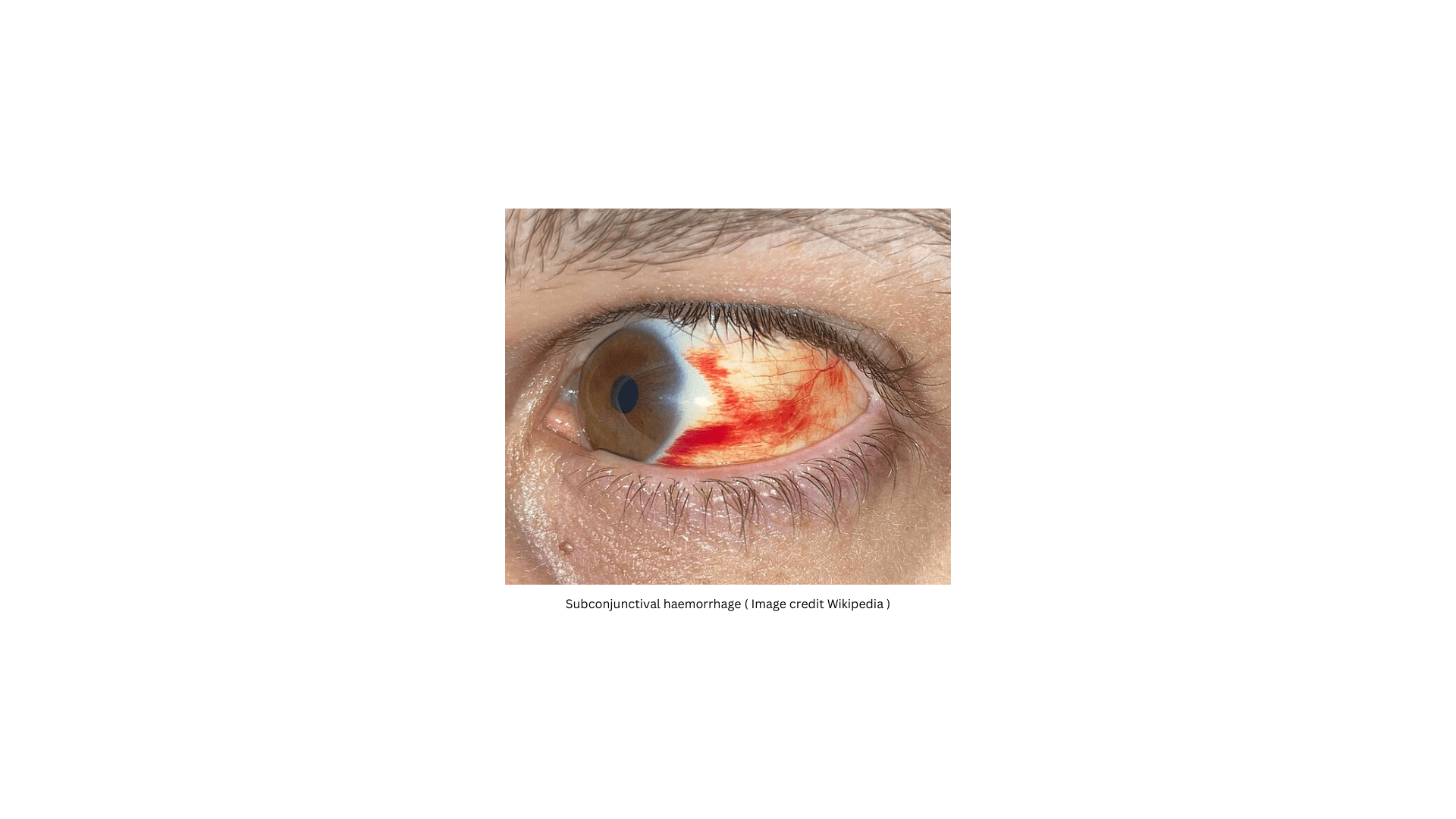Download A4Medicine Mobile App
Empower Your RCGP AKT Journey: Master the MCQs with Us!

Subconjunctival haemorrhage (SCH) is a visual condition that frequently garners immediate attention due to its striking appearance, characterized by the sudden onset of a bright red patch on the white part of the eye. This condition arises from the rupture of small blood vessels beneath the conjunctiva, the clear membrane covering the sclera, leading to the accumulation of blood. Despite its often alarming presentation, SCH is typically a benign and self-limiting condition that does not affect vision and usually resolves without intervention.
In the majority of adult cases, SCH is idiopathic, meaning no definitive cause is identified. However, a range of factors, from minor trauma to sneezing or heavy lifting, can precipitate this condition. Systemic associations, particularly in recurrent cases, include hypertension, diabetes, and blood clotting disorders, among others, which necessitates a broader medical evaluation to rule out more serious underlying health issues.
Conversely, SCH is less common in the pediatric population and is usually associated with trauma. The occurrence of SCH in children demands a thorough and careful examination to exclude other signs of injury or abuse, particularly in those too young to communicate effectively.
Understanding SCH's aetiology, risk factors, and associations is crucial for clinicians to manage patient...
Try our Free Plan to get the full article.